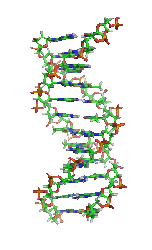Pros and Cons of Stem Cell Research - What are Stem Cells? There has been much controversy in the press recently about the pros and cons of stem cell research. What is the controversy all about? "Stem" cells can be contrasted with "differentiated" cells. They offer much hope for medical advancement because of their ability to grow into almost any kind of cell. For instance, neural cells in the brain and spinal cord that have been damaged can be replaced by stem cells. In the treatment of cancer, cells destroyed by radiation or chemotherapy can be replaced with new healthy stem cells that adapt to the affected area, whether it be part of the brain, heart, liver, lungs, or wherever. Dead cells of almost any kind, no matter the type of injury or disease, can be replaced with new healthy cells thanks to the amazing flexibility of stem cells. As a result, billions of dollars are being poured into this new field.
Pros and Cons of Stem Cell Research - Where Do They Come From? To understand the pros and cons of stem cell research, one must first understand where stem cells come from. There are three main sources for obtaining stem cells - adult cells, cord cells, and embryonic cells. Adult stem cells can be extracted either from bone marrow or from the peripheral system. Bone marrow is a rich source of stem cells. However, some painful destruction of the bone marrow results from this procedure. Peripheral stem cells can be extracted without damage to bones, but the process takes more time. And with health issues, time is often of the essence. Although difficult to extract, since they are taken from the patient's own body, adult stem cells are superior to both umbilical cord and embryonic stem cells. They are plentiful. There is always an exact DNA match so the body's immune system never rejects them. And as we might expect, results have been both profound and promising.
Stem cells taken from the umbilical cord are a second very rich source of stem cells. Umbilical cells can also offer a perfect match where a family has planned ahead. Cord cells are extracted during pregnancy and stored in cryogenic cell banks as a type of insurance policy for future use on behalf of the newborn. Cord cells can also be used by the mother, the father or others. The more distant the relationship, the more likely it is that the cells will be rejected by the immune system's antibodies. However, there are a number of common cell types just as there are common blood types so matching is always possible especially where there are numerous donors. The donation and storage process is similar to blood banking. Donation of umbilical cells is highly encouraged. Compared to adult cells and embryonic cells, the umbilical cord is by far the richest source of stem cells, and cells can be stored up in advance so they are available when needed. Further, even where there is not an exact DNA match between donor and recipient, scientists have developed methods to increase transferability and reduce risk.
Pros and Cons of Stem Cell Research - Embryonic Cells The pros and cons of stem cell research come to the surface when we examine the third source of stem cells - embryonic cells. Embryonic stem cells are extracted directly from an embryo before the embryo's cells begin to differentiate. At this stage the embryo is referred to as a "blastocyst." There are about 100 cells in a blastocyst, a very large percentage of which are stem cells, which can be kept alive indefinitely, grown in cultures, where the stem cells continue to double in number every 2-3 days. A replicating set of stem cells from a single blastocyst is called a "stem cell line" because the genetic material all comes from the same fertilized human egg that started it. President Bush authorized federal funding for research on the 15 stem cell lines available in August 2001. Other stem cell lines are also available for research but without the coveted assistance of federal funding.
So what is the controversy all about? Those who value human life from the point of conception, oppose embryonic stem cell research because the extraction of stem cells from this type of an embryo requires its destruction. In other words, it requires that a human life be killed. Some believe this to be the same as murder. Against this, embryonic research advocates argue that the tiny blastocyst has no human features. Further, new stem cell lines already exist due to the common practice of in vitro fertilization. Research advocates conclude that many fertilized human cells have already been banked, but are not being made available for research. Advocates of embryonic stem cell research claim new human lives will not be created for the sole purpose of experimentation.
Others argue against such research on medical grounds. Mice treated for Parkinson's with embryonic stem cells have died from brain tumors in as much as 20% of cases.1 Embryonic stem cells stored over time have been shown to create the type of chromosomal anomalies that create cancer cells.2 Looking at it from a more pragmatic standpoint, funds devoted to embryonic stem cell research are funds being taken away from the other two more promising and less controversial types of stem cell research mentioned above.
Learn More Now!
Footnotes 1 The Real Promise of Stem Cell Research Dr. David Prentice, HealthNewsDigest.com 2 Derivation of Human Stem-Cell Lines from Human Blastocysts, C. A. Cowan and others. March 25, 2004, New England Journal of Medicine, p.1355 with secondary reference to footnotes 13-17 p.1356.
Like this information? Help us by sharing it with others. What is this?
Read the original:
Pros And Cons Of Stem Cell Research - Popular Issues ...
